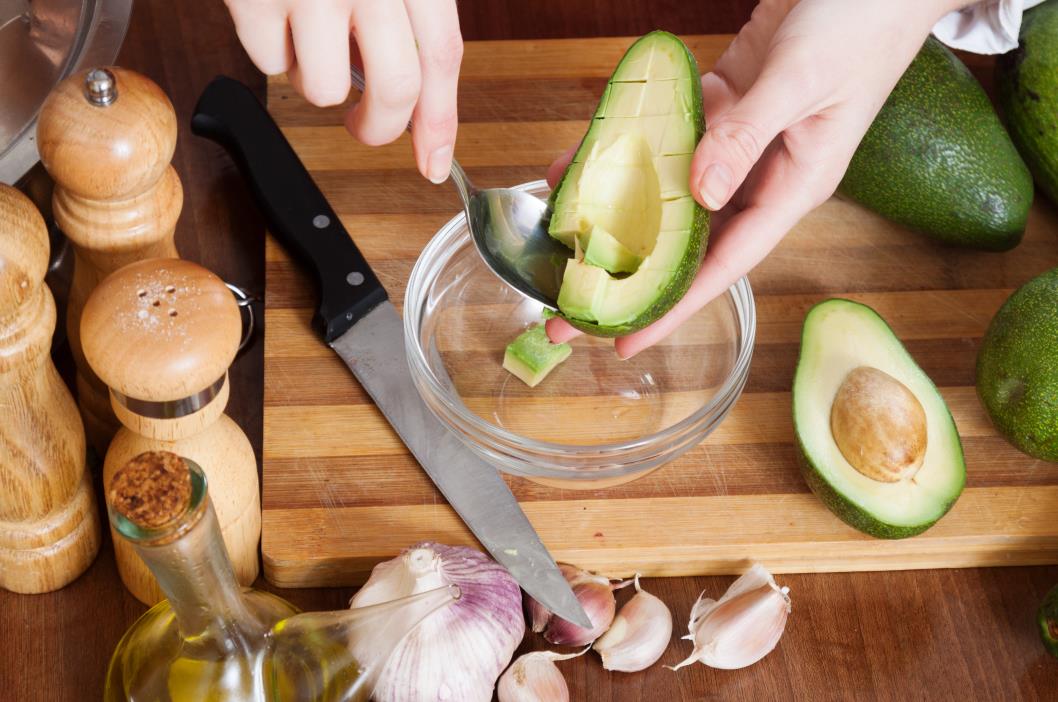Kitchen knives are almost always held by their handles, yet their blades seem to get away with all the credit. While it is true that well-crafted blades promise the best cuts, well-made handles are just as important. This is because they dictate the overall comfort, grip and aesthetics of the cutlery tool.
For this reason, it is important for you to choose a handle that gives you the best culinary results, and most chefs swear by wood. Since there is a large variety of wood options to choose from, we have shortlisted some of the best wood for knife handles for your ease:
The best wood for knife handles is ebony, primarily known for its durable, aesthetically pleasing nature. Knife enthusiasts are ever so eager to buy an ebony, owing to its luxurious identity, resilient performance as well as perfect grip. However, maple burl, amboyna, cherry wood and oak are also some other great options to choose from.
Read on to discover what makes these wood handles unique in terms of functionality, durability, style and overall performance.
Table of contents
Why choose wood handles?
Wood has been used as a knife handle for a long time. Many reasons make it a top choice for use as a knife handle, such as durability and attractiveness. It is also relatively inexpensive, widely available, and offers an extensive mix of comfort, style and flexibility that other material handles fail to offer.
Benefits of wooden knife handles
Before choosing the best wood for knife handles, let us look at the various advantages of using wood as a knife handle.
Extensive variety
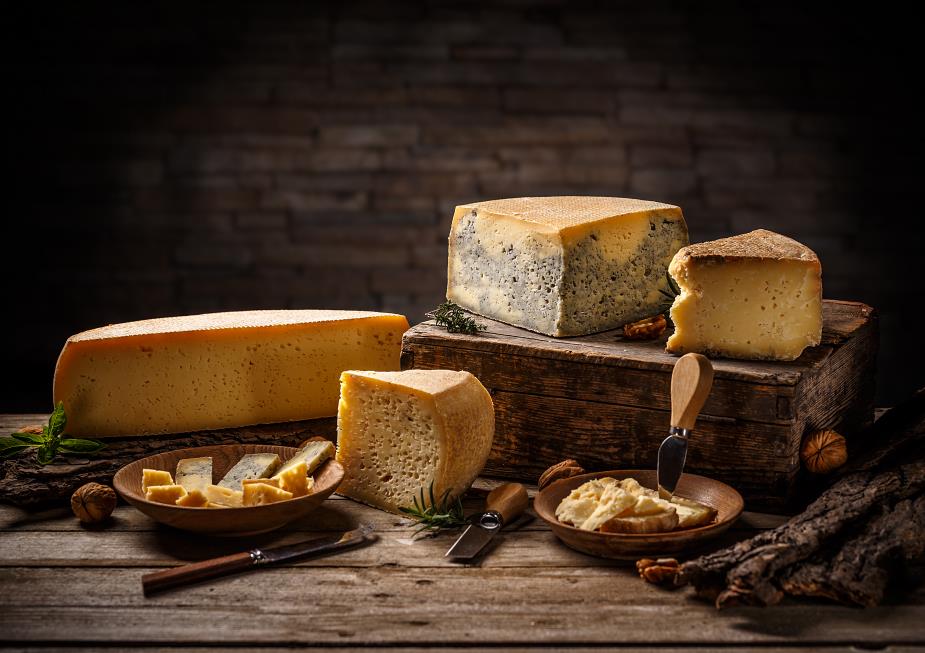
Mother nature offers a wide variety of wood choices, in various grains, colours, and prices. Each wood option comes with its own set of unique characteristics and attributes, making it a personal favorite knife for their owner.
Sustainable
Wood is environmentally friendly, renewable and biodegradable. Since sustainability is the new norm, it is the most preferred option for knife users. Wood can also be made more durable by injecting it with polymer resin and treating it under high pressure, making it stabilized and less prone to damage.
Comfort
Nothing can compare to the warmth and comfort that wooden knife handles provide a knife owner with. Slightly rounded knife handles are great to hold and work with, and stabilized woods are a plus since they last long, are denser, and do not need oiling.
Smooth grip
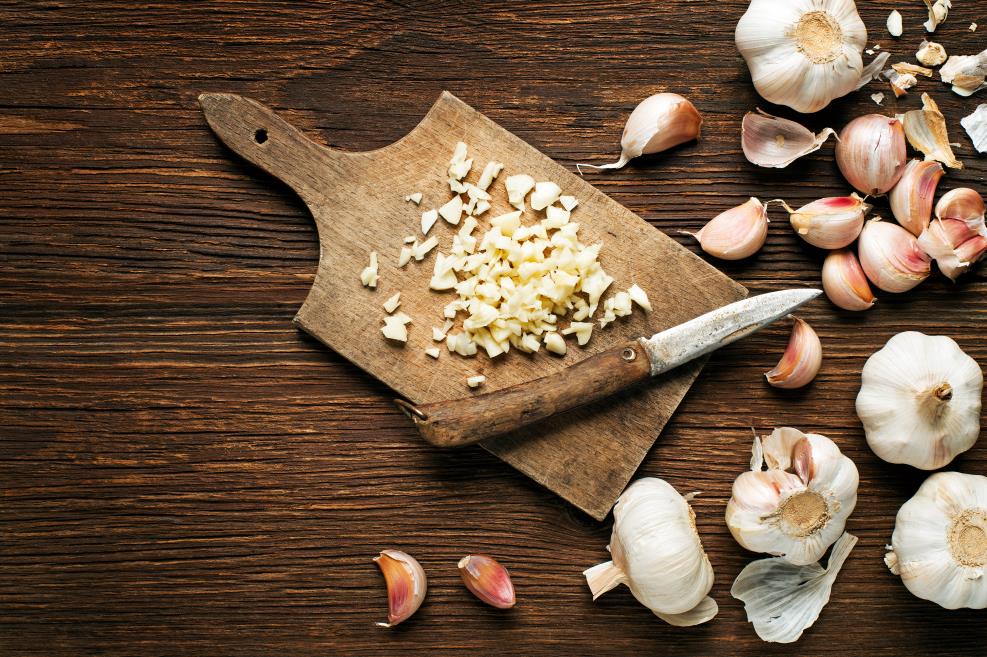
Slippery knives can prove to be very dangerous. This is why wooden handles are best, since they are naturally textured and provide a smooth and secure grip. For this reason, knife users are generally on the lookout for the best wood for knife handles.
Aesthetic appeal
Wooden handles compliment metal blades exceptionally well. Nothing can beat this duo in terms of aesthetic appeal, making it a superior choice for crafting knife handles.
Durable
While some wood species are prone to damage in wet conditions, stabilized woods and hardwoods offer great durability and resilience, hence are considered the best wood for knife handles. Also, with good care, they will last long and even withstand harsh conditions such as heat.
Recommended wooden handle knives
True cutting power in the palm of your hand
Comparison of wood handles to other types
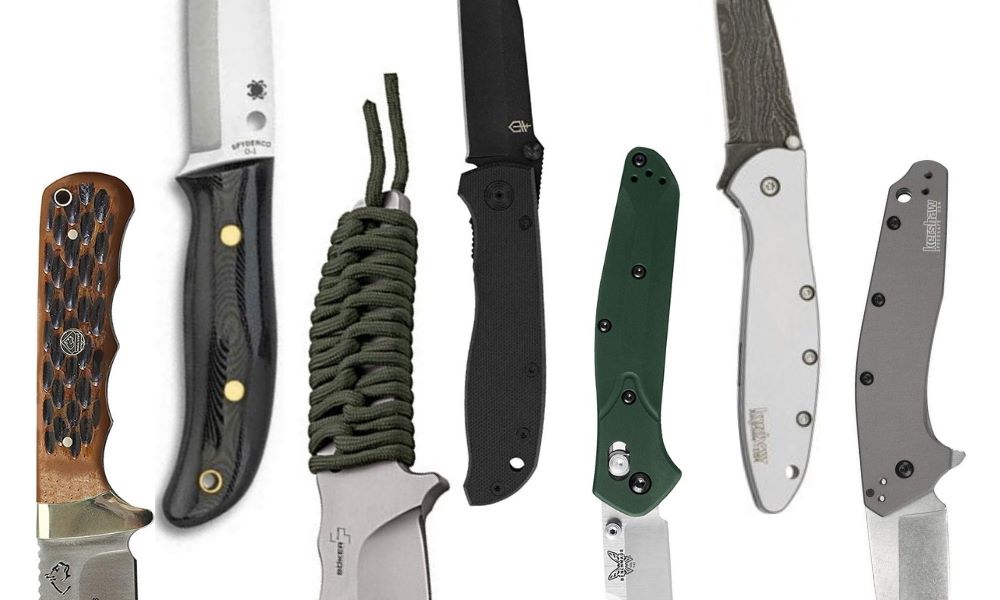
Wooden handles, metallic handles, and synthetic handles each come with their own set of advantages and drawbacks. Wood is largely sustainable, easily available, offers durability as well as attractiveness. However, it is not always temperature and humidity-resistant.
Metals such as aluminium, stainless steel, and titanium are popular for their durability, toughness, and easy to maintain nature. Sadly, these handles are slippery and not very easy to grip. Lastly, synthetic materials such as plastic or resin are highly customizable, durable, as well as resistant.
Here is a comparison of wooden handles to metal and synthetic ones, so you can make an informed choice:
| Wooden Handles | Metallic Handles | Synthetic Handles | |
| Functionality | Best for indoor and outdoor use | Best for outdoors | Best for survival and hunting knives |
| Sustainability | Yes | No | No |
| Resilience | Durable and long lasting | Strong and durable | Less durable than metallic handles |
| Affordability | Mostly cheap and easily available | Affordable | Price range varies |
| Safety | Safe grip | Heavy and Slippery | Lightweight and safe to use |
| Grip | Comfortable and secure grip | Lacks secure grip | Good grip |
| Prone to insect infestation | Yes | No | No |
| Temperature and Humidity Resistant | Not always | Mostly | Mostly |
The above comparison chart signifies that wooden handles offer the most benefits over metallic and synthetic ones.
Factors to consider when choosing a handle
Before choosing a handle, there are certain factors that must be considered.
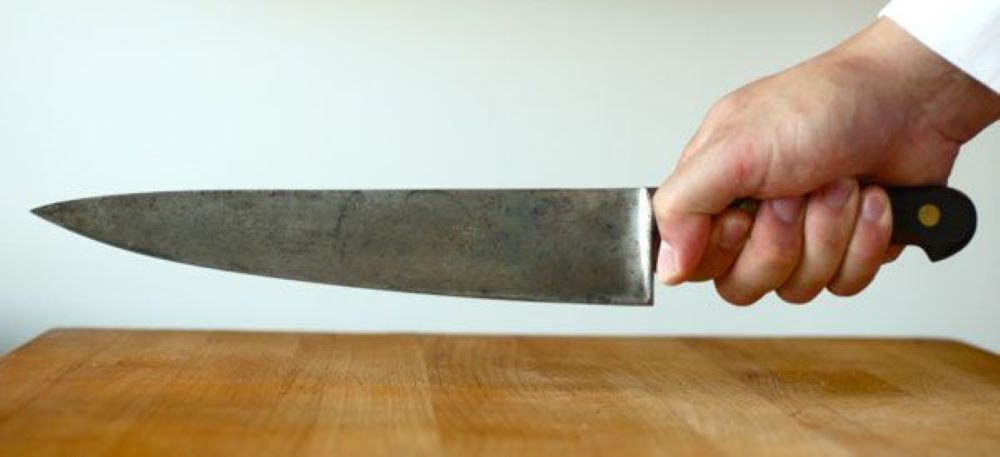
Grip
The grip is the one of the most important features to consider when choosing a knife. This is because using a knife largely involves gripping it by the handle. Sporting a secure grip in turn ensures minimum strength and easy manoeuvring of the weight and sharpness of the knife.
Price
When choosing a knife handle, you must ensure that the material is worth the price you are paying. Depending on your use and liking, you may want to spend more or less on the type of material.
Durability
We cannot overemphasize the importance of durable handle materials for knives. Durable knife handles ensure that your knife lasts long and improves the overall lifespan of your cutlery tool, saving you the trouble of frequent replacement.
Water resistance
Considering a water resistant handle material is a must, especially if you are going to use your knife in wet conditions more often. This is because water can make materials rust, decay quickly, or allow absorption. In turn, it impacts upon the overall durability of the knife handle.
Comfort
Using a knife can be an overwhelming task if the handle is unpleasant or difficult to hold. Having a handle that is comfortable will allow you to have fun working with it and create beautiful, perfect cuts each time.
Insect infestation
Last but not the least, watch out for knife handle materials that are prone to insect infestation. Some types of materials, such as olive wood, are prone to termites and other insect infestation if not taken care of properly. Watching out for this factor will save you the trouble of sanitization in the long term.
List of best wood for knife handles
Considering you are now well-versed on the importance of wooden knife handles, now we will introduce you to a list of a few of the best wood for knife handles available. As such, there are many different types of wood that you can choose from.
Amboyna burl
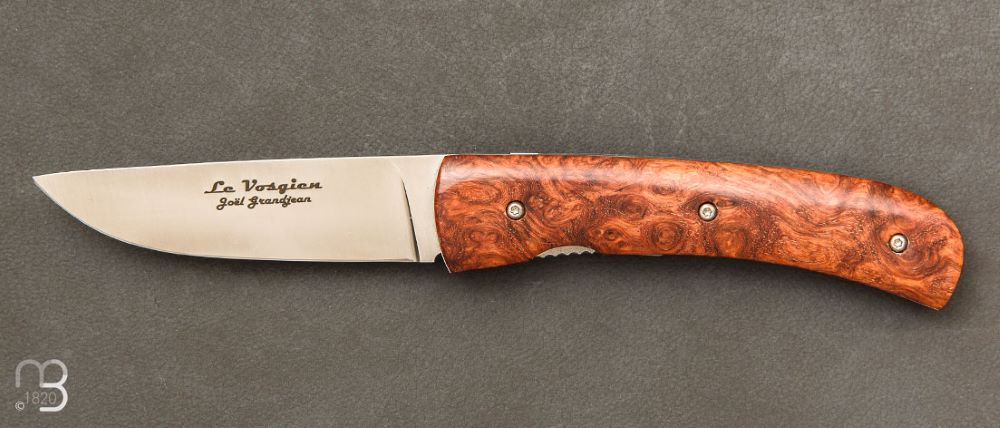
If you’re looking for a luxurious piece of wood to compliment your blade, the amboyna burl won’t disappoint you. Since it is considered to be one of the best wood for knife handles in the market, it will most likely cost you a pretty penny. The amboyna burl is also called padouk, and makes for an elegant knife handle.
Its wood is dense and hard, with a moderately fine texture. It is a stable piece of wood that is resistant to oxidation. Known for beautiful coloration, it has varying tones of deep vivid red as well as light yellow and golden brown. Many people affiliate its smell to that of freshly baked goods.
This expensive piece of wood is mainly used for crafting ornamental knives as well as custom knives. Since it costs a fortune, it might not be suitable for everyday use in the kitchen.
Ebony
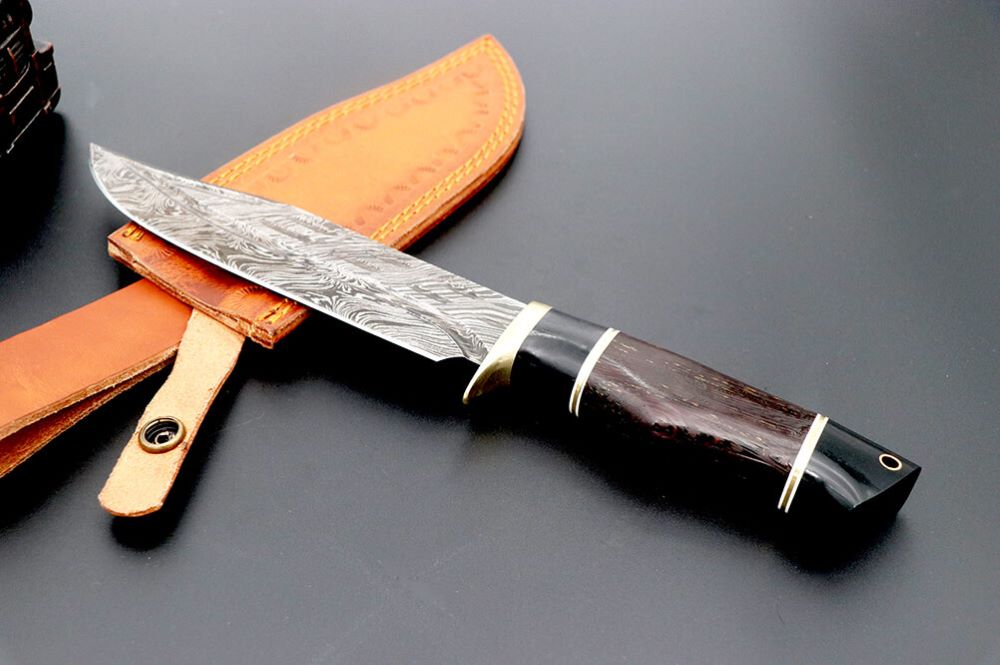
Wooden Price: High
The ebony wood has an aesthetic appeal unmatched by other varieties of wood. Its exceptionally fine-grained texture, strong and durable nature, and beautiful look makes it one of the best wood for knife handles. This masterpiece stands out from the crowd, which is why we chose ebony in our knife handles.
Having an almost jet black colour, the lighter grains of dark brown and graygrey complement its overall appearance. Apart from the look, however, its functional aspects are also unrivaledunrivalled. Not only is it durable and tough, but also facilitates the perfect grip for ease of cutting.
This wood is also best known for being immune to infestation, making it enduring all the more. However, these functionalities make ebony come with a heavy price tag. Also, due to its toughness, it takes a longer time to shape and is harder to work on.
Walnut wood
Walnut wood is renowned for its classic elegance and functional superiority. With its rich, dark hue and intricate grain patterns, walnut offers a visual appeal that is both timeless and sophisticated. This durable and strong wood is an excellent choice for knife handles, providing not only beauty but also reliability. Its smooth finish and comfortable grip make it a favorite among knife enthusiasts who value both form and function.
In addition to its aesthetic allure, walnut is prized for its practical benefits. It is relatively stable, resisting warping and maintaining its integrity over time. This stability ensures a consistent and dependable performance in various conditions. Moreover, walnut’s workability allows for precise and intricate detailing, enhancing the overall craftsmanship of the knife handle. While not the most expensive option, walnut offers a balance of quality and affordability, making it a preferred material for many knife makers.
Cherry wood
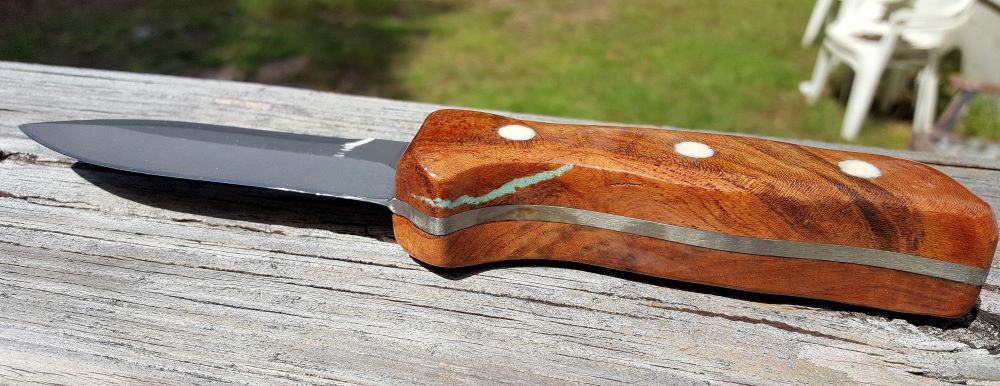
Wooden Price: medium
Another type of wood that can be used for making knife handles is cherry wood. Featuring a closed, fine grain pattern, the wood offers an excellent and smooth finish, which is why many consider it to be one of the best wood for knife handles. The hardwood comes in shades of reddish brown, which darken in shade with time.
This wood offers a firm grip to the knife holder, and its moderately hard nature makes it one durable knife. Its water resistant properties allow it to last for generations. Overall, this material is a perfect choice for everyday use in the kitchen, both in terms of look and functionality.
However, if you’re looking for a really tough knife, cherry wood may not be the best choice. This is because cherry wood falls on the softer end of hardwoods. Moreover, its soft and flexible nature makes it more prone to breakage.
Maple burl

Source: Jonas Blade
The outer growth called burl on an Acer macrophyllum, a big leaf maple tree, is used to obtain maple burl. Maple burl is by far the most commonly used knife handle material used in kitchens today due to its versatile nature and application uses.
As such, maple burl makes for a durable and rigid knife handle, offers ease of use, comfortable grip, as well as flexibility. These features have helped maple burl make it to our list of best wood for knife handles. It is also a visually appealing knife and can be used to obtain bright colours such as red, blue, and green etc.
Before using this wood as a handle, however, it must be stabilized to prevent cracking. After stabilization, it can be dyed into various colours of your choice.
Oak wood
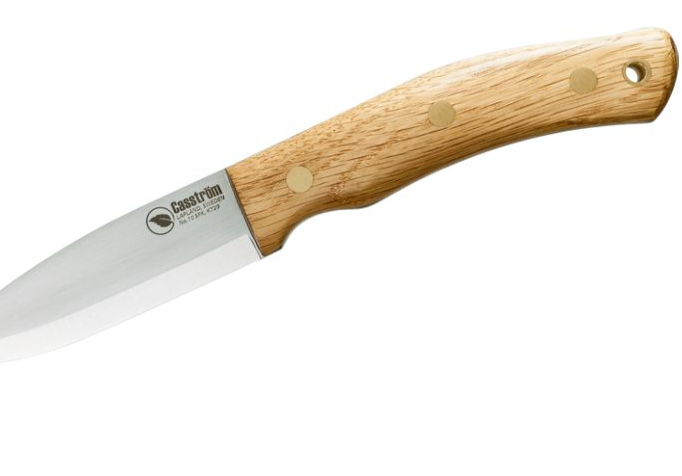
Source: knifecenter.com
Wooden Price: medium
Another wood that made it to our list of best wood for knife handles is oak. Since it can be carved easily, it provides the chance to harness the perfect grip and control over your knife handle. Moreover, it is stable and more durable than most wooden knife handles.
Being widely available, it is a cheaper wood option and has been used traditionally in the kitchen for thousands of years. It’s fine grain texture, and shades of brown and light brown makes it visually appealing as well.
A downside of oak, however, is that it is brittle and may split upon use with direct impact. Also, raw oak tends to have tannins which makes it prone to rust. Therefore, this material ought to be taken care of.
Bocote
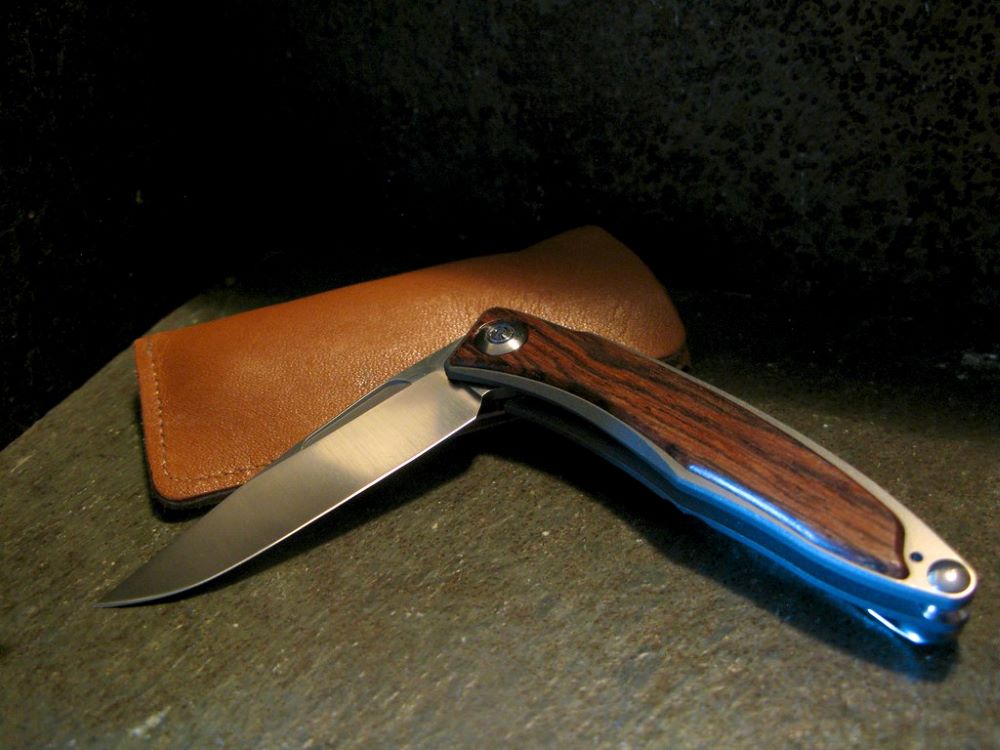
The Bocote wood is also used widely for making knife handles. It originates from parts of Central America and Mexico. Being a tropical wood, knife lovers love this specific wood piece especially for its comfortable grip and aesthetically pleasing nature.
Its yellowish brown colour, with dark brown and blackish striping gives it an overall dramatic look. Also, its colour is prone to darken with age. These striking features coupled with a moderately durable nature makes it one of the best wood for knife handles.
The hardwood falls under medium to high price range depending on its tree species. Be careful though, as this wood is susceptible to insect infestation. Proper maintenance and care is required to make this beauty last longer.
Bloodwood satin
Wooden Price: Medium to high
Bloodwood satin, with its straight grained texture and durable nature, makes it another one of the best wood for knife handles. Also known as cardinal wood or Brazil redwood, it mostly has its origins in Caribbean countries as well as Central America.
Bloodwood, as the name implies, exhibits lustrous shades of deep reds and minute hues of purple. This beautiful wood makes for an extremely appealing knife handle, and tends to darken with age. Its durable nature and fine, smooth finish makes it a shiny wooden masterpiece.
Although it is not a popular choice for daily use, knife enthusiasts love to add this wooden piece to their knives collection.
Birch laminate
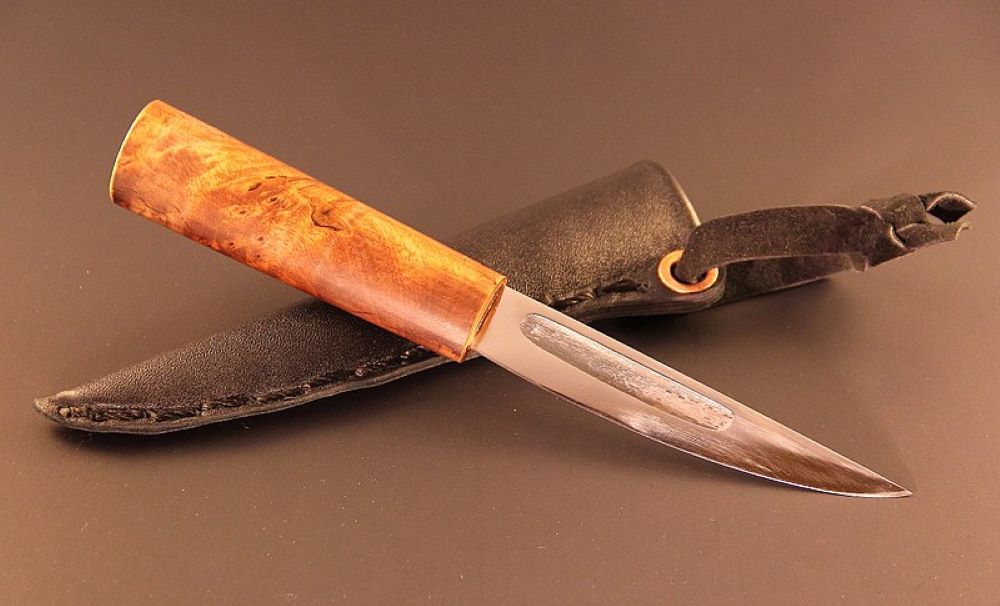
This wood species is highly valued for its low weight, waterproof and rust resistant nature. Another peculiar property of this species is that it has low thermal conductivity. You will love working with this knife, especially in winters as it will feel warmer in the hands.
The birch laminate is not only beautiful, but also offers a comfortable grip. Birch trees are mostly found in the northern hemisphere, particularly Europe and America. Also, the wood is extremely easy to work with, and can be carved into various shapes.
A downside of this wood piece is that it discolours easily. However, these environmentally friendly woods are easy to grow back and hence prove to be one of the best wood for knife handles, both as kitchen knives and outdoor hunting knives.
Rosewood
If you are looking for a premium yet affordable, beautiful wood with great functional benefits, rosewood is what you are looking for. This wooden piece offers great durability, toughness, and aesthetic appeal. This is why many claim it to be one of the best wood for knife handles out there.
Somewhat similar to oak and ebony, rosewood can be used in the kitchen, as an ornamental knife, and even a hunting knife. The best among its kind, however, is the Indian rosewood. This is because it offers greater durability, toughness, and resistance to insect infestation.
Taking care of your wooden knife handle
Taking care of your wooden handle isn’t a hassle at all and requires just a little bit of time once or twice a month.
What you must remember, however, is that wooden handles tend to dry out regardless of use, even if it is made using the best wood. For this reason, oiling must be done every once in a while. This will allow you to prevent cracks in your handle and make it look as fresh as morning dew.
Another point to remember is that some wooden handles do not require oiling, such as stabilized woods, or those that have polish or paint on them.
Selecting the best wood for knife handles
Choosing a wooden handle largely depends on your needs and what you expect from your handle, so you must decide accordingly.
The only thing that you must keep in mind when selecting the best wood for knife handles is that it must be a hardwood, since hardwood offers superior strength and durability and makes better knife handles.
If you ask us, however, our personal favourite is the ebony. This is why we, at HDMD, use ebony as it is potentially the best wood for knife handles. Having the perfect combination of luxury and comfort, grip and durability, flexibility and aesthetic appeal, ebony is in high demand and tops all other wooden choices that we have encountered so far. Explore our range of special, forged knives complimented with luxurious ebony handles here!












